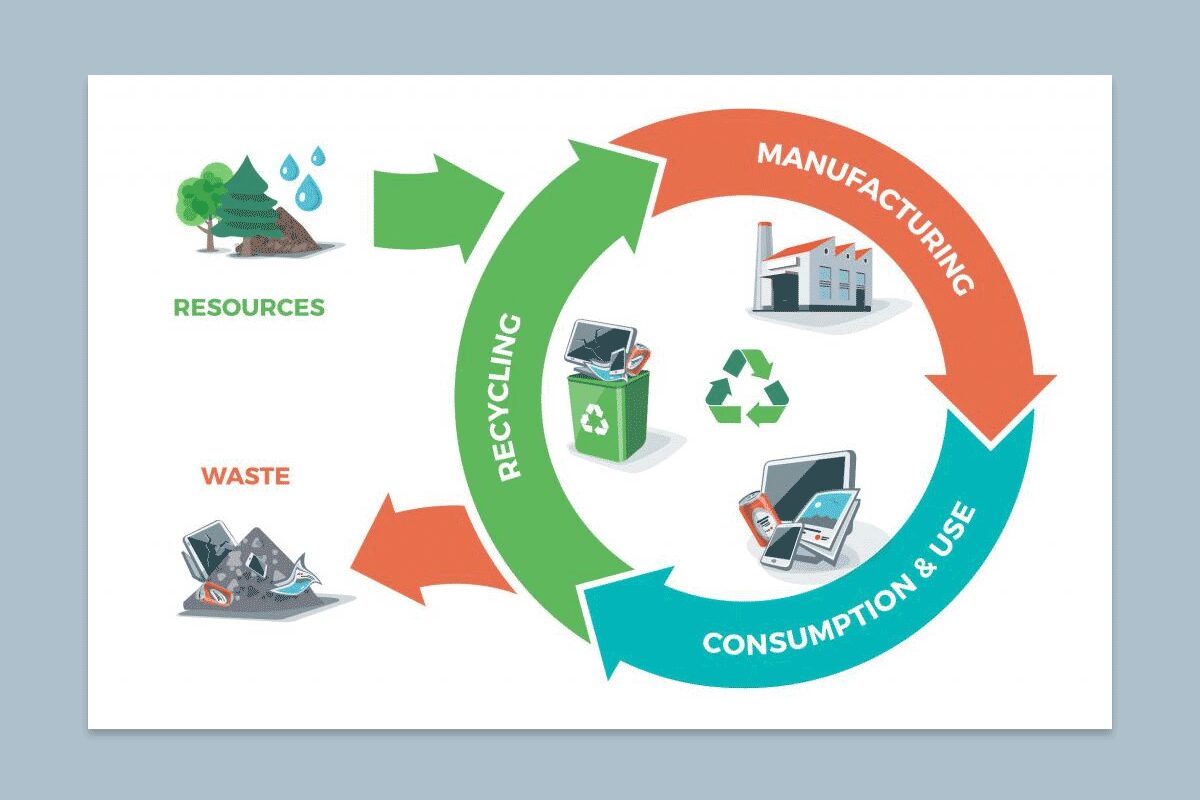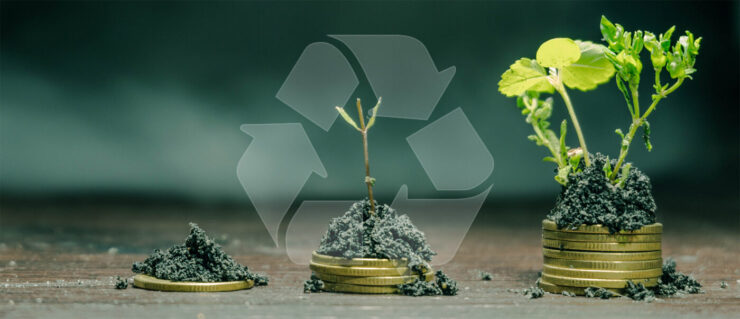The circular economy is a future-oriented concept that seeks to create an economy where resources are used and disposed of in a way that does not create negative environmental impacts. In this article, we explore some of the environmental benefits of implementing a circular economy in your business.
The circular economy is an emerging economy model in which resources are used and disposed of more efficiently over their lifecycle, from extraction to reuse and recycling. There are many environmental benefits of a circular economy, including reducing greenhouse gas emissions, improving air quality, and reducing waste.
Here are some of the environmental benefits of the circular economy:

- Reduced greenhouse gas emissions: The circular economy reduces greenhouse gas emissions by creating a closed loop where materials are reused and recycled. This reduces the need to create new products and materials from scratch, which cuts down on greenhouse gas emissions.
- Improved air quality: The reduction of waste and the use of recycled materials can improve air quality by reducing the amount of harmful pollutants released into the environment. Recycling also creates new jobs in the recycling industry, which helps to reduce unemployment rates.
- Reduced waste: The circular economy reduces the amount of waste produced byproducts by recycle and reuse instead of discarding them. By doing this, it helps to reduce the amount of land that needs to be used for disposal, as well as reduce pollution caused by wasted materials.
- Reduced wastefulness: The circular economy encourages wastefulness to be reduced by preventing products from entering the cycle in the first place. Byproducts that would have been thrown away can now be used in other ways, which reduces the amount of waste that is created.
- Increased sustainability: The circular economy is more sustainable than the traditional economy because it reduces the amount of waste that needs to be generated in the first place. With a more sustainable circular economy, there is less need to find new ways to extract resources and destroy ecosystems.
What is the Circular Economy?

The circular economy is a new way of looking at the economy in which everything is constantly moving from being waste to becoming resources again. This can mean reducing and recycling materials, using products that can be recycled multiple times, and designing products that can be repaired or rebuilt. The benefits of the circular economy are numerous and include environmental, economic, and social advantages.
The circular economy is not new, but it has been growing in popularity in recent years because it has the potential to create a more sustainable and efficient economy. There are many different ways to implement the circular economy, and it is important that each country and company chooses the approach that works best for them.
How Does the Circular Economy Work?
The circular economy is a sustainable economic model in which products and materials are used and processed in a way that allows them to be reused or recycled over and over again. Items that are discarded or waste in the traditional economy are often recycled and reused in the circular economy. This process begins with finding a new use for an item that would have been thrown away in the past. For example, a used bike may be refurbished and offered for sale as a new product. The components of the bike may be used to create new bikes, or they may be recycled into new materials. The recycling process also includes recovering materials from waste products, such as plastic bottles and food packaging.
The benefits of the circular economy are manifold. It reduces the amount of waste that is created, decreases environmental impact, and creates new economic opportunities. The circular economy is already being used by many businesses and municipalities around the world.
Advantages of the Circular Economy for Businesses

The benefits of the circular economy for businesses are significant. The circular economy is a system in which products are designed to be reused and recycled, reducing waste and pollution. Here are five reasons why businesses should adopt a circular economy:
- It’s cost-effective: The circular economy is cost-effective because it reduces waste and pollution. In fact, a study by the World Economic Forum found that the global economic benefits of a circular economy could be as high as $2 trillion per year.
- It’s sustainable: The circular economy is sustainable because it prevents waste from accumulating in landfills or harming ecosystems. By designating specific products as recyclable, businesses can help reduce the amount of plastic that ends up in landfills.
- It reduces energy consumption: The circular economy reduces energy consumption because it eliminates the need for wasteful production and consumption processes. For example, when products are designed to be reused or recycled, they require less energy to produce and recycle than when they’re used in their original form.
- It helps address pollution issues: The circular economy helps address pollution issues because it reduces the amount of waste that’s produced unnecessarily. For example, when products are designed to be reused or recycled, they can be recovered and used again without releasing harmful pollutants into the environment.
- It enhances productivity: The circular economy enhances productivity because it reduces the amount of time that’s needed to process and manufacture products. By designating specific products as recyclable, businesses can help reduce the amount of waste that’s produced in the manufacturing process.
Conclusion
In recent years, the term “circular economy” has become increasingly popular, as businesses strive to create a more sustainable and resource-efficient way of operating. While there are many different definitions of a circular economy, here we will focus on its environmental benefits. Byproducts of our everyday lives—from materials we use to manufacture products to the waste we produce after using them—can be reused or recycled multiple times to create new products or resources. In addition, reducing our reliance on nonrenewable resources can help us protect the environment and safeguard our future.

